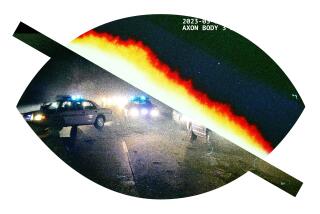Zeroing In on TV and Movie Violence : Two far-reaching studies promise important new data in a growing controversy
- Share via
As the hoopla surrounding television’s new fall season escalates, so too does the seemingly unending debate over the extent, nature and dangers of violence on TV and in movies.
That we live in an increasingly brutal world seems beyond dispute. And that movie makers, television producers and video game designers have, in recent decades, “pushed the envelope” in depicting murder and torture is also self-evident. But beyond agreement on these basics, consensus evaporates.
What is the relationship between violence on screen and violence in the streets? And what’s the best way to limit or filter on-screen violence--if that should be done at all? How much violence is there in the media? How much is too much? Which acts of violence are “gratuitous” and which are essential and appropriate to the telling of a story or to news reporting? How do we know? What, indeed, is a violent act? Who decides? What evidence is there as to the negative effects of watching violence?
The answers to these questions should determine the direction of public policy. But instead, as street violence becomes numbingly common, proposals to restrict screen violence spring as often from emotion as from fact. Sensible proposals to require warnings on programs, movies or video games with “excessive” violence or to develop technology enabling TV viewers to block violent programs may avoid contact with the First Amendment’s right of free speech. But some go further by advocating outright censorship of violence--even though the fundamental questions about the connection between viewing violent programs and committing violence remain unanswered.
The major television networks have long complained that their entertainment programs are not the biggest part of the problem. Footage of actual violence on news broadcasts and cable programming are the big offenders, executives of the big networks maintain.
Yet solid determinations are hard to come by. That’s why we are encouraged by news that two separate studies are under way to better define what’s violent and to tally the amount of it on the air. These three-year studies promise to be more comprehensive than past efforts, which have drawn conclusions from snapshots of programming or which have excluded cable programming.
The studies, being done by the UCLA Center for Communication Policy and the Studio City-based Mediascope, are commissioned and underwritten by the network and cable companies themselves. When the results are in, the burden may be on the industry to respond.
More to Read
The complete guide to home viewing
Get Screen Gab for everything about the TV shows and streaming movies everyone’s talking about.
You may occasionally receive promotional content from the Los Angeles Times.






